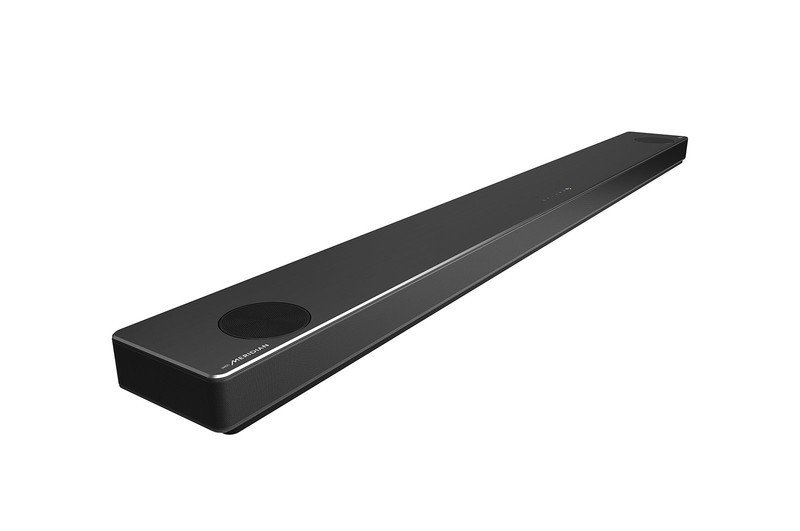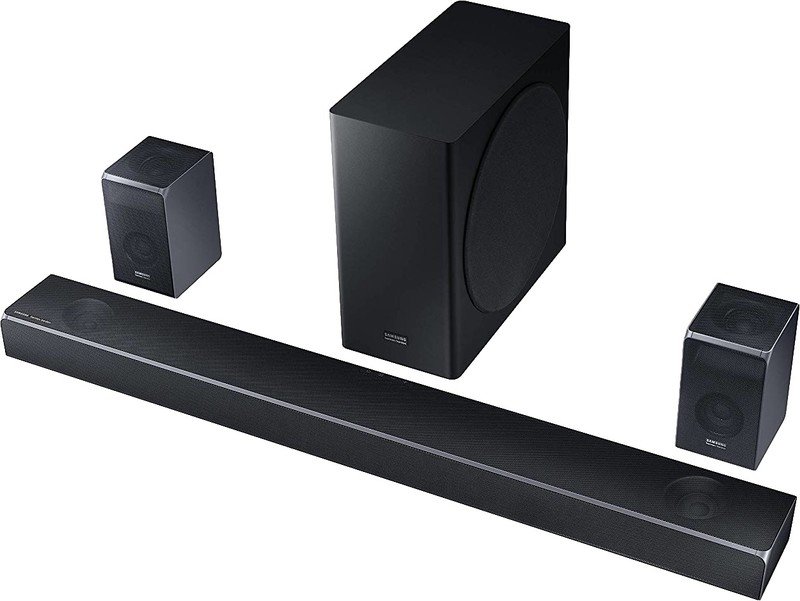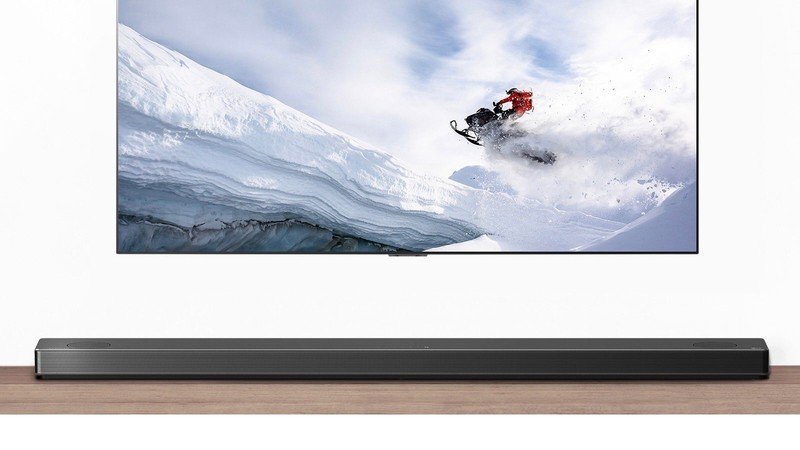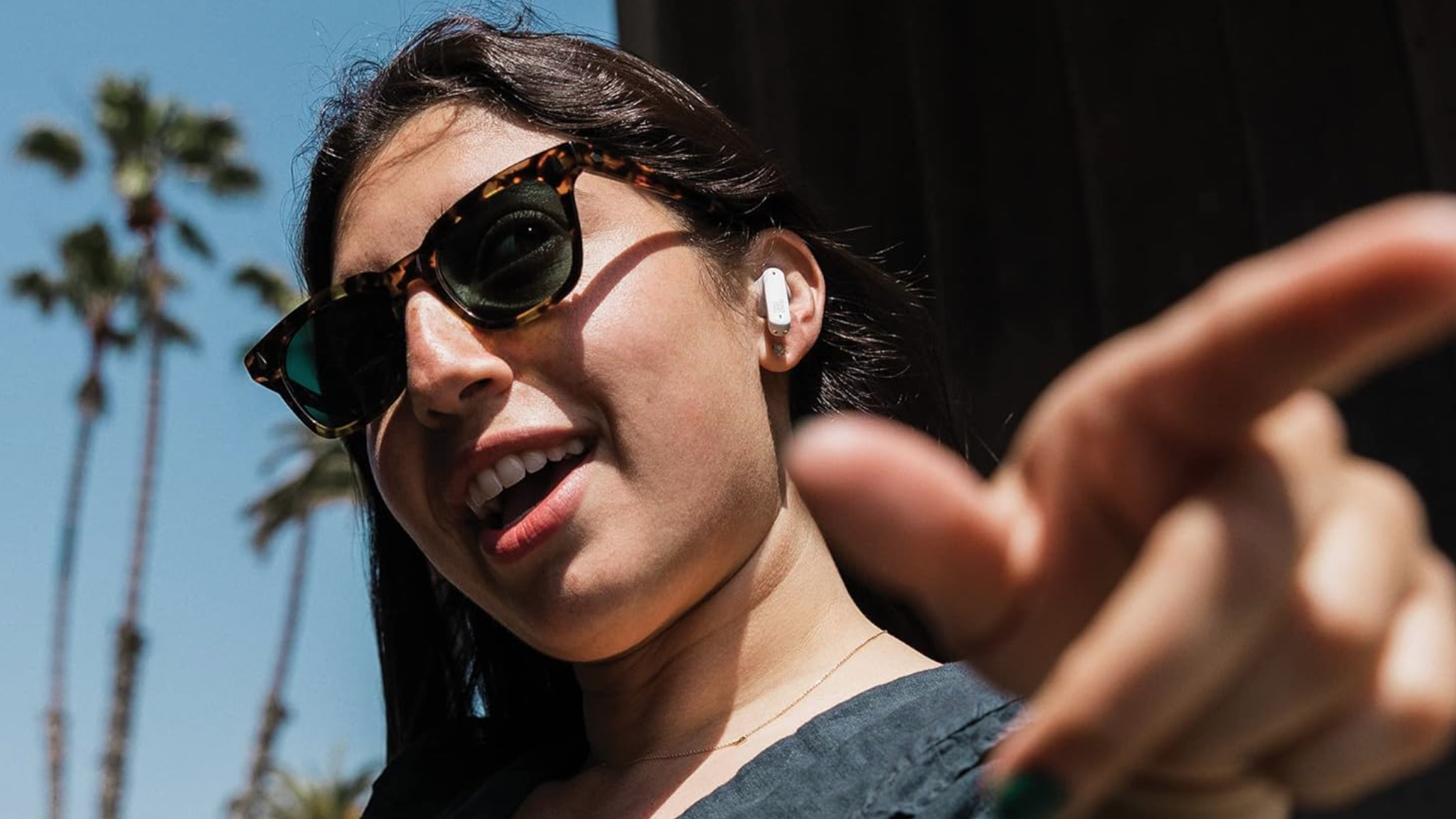Samsung HW-Q90R vs. LG SN11RG: Which Atmos soundbar should you buy?

LG SN11RG Soundbar

LG's new soundbar is the latest challenger for the Dolby Atmos crown, and makes a valiant effort. With excellent rear speakers and height effects, it creates a 3D sphere that audiophiles will admire. It also benefits from multiple AI modes for optimizing audio content, AI room calibration, and built-in Chromecast for easy streaming.
LG SN11RG Soundbar
Best Atmos performance
Samsung HW-Q90R Soundbar

The HW-Q90R is one of the strongest Dolby Atmos / DTS:X soundbars on the market thanks to its 8-inch wireless subwoofer and effective rear speakers with upward-facing drivers. Outside of Atmos, it's an all-around excellent speaker that does a good job of upscaling any audio source to 7.1.4ch and using adaptive AI to make dialogue clearer and action scenes more dynamic.
Samsung HW-Q90R Soundbar
Best non-Atmos performance
These two flagship soundbars, which are some of the best soundbars available right now, are priced and designed for an epic showdown. Both are 7.1.4 channel setups with eARC, HDR10 and Dolby Vision pass-through, Dolby Atmos and DTS:X compatibility thanks to up-firing rear speakers, and AI-based upscaling and sound modes — and both cost a hefty sum. As they're so similar, you'll need help deciding which device to buy, so we've laid out the differences in specs, features and performance that will guide your choice.
Samsung HW-Q90R vs. LG SN11RG: Nitpicking two excellent soundbars

Samsung and LG were thorough in adding useful features and wide-ranging audio compatibility to their soundbars. Thus, each rival surpasses the other in key areas that may or may not be important to you, but overall, both are reliable purchases regardless of some minor shortcomings.
Both the Samsung HW-Q90R and LG SN11RG have one HDMI output and two inputs, enabling ARC/eARC and 4K/HDR10 pass-through, as well as connectivity options via Bluetooth, Wi-Fi and optical cable. LG also sports a USB port if you want to connect an external hard drive of music or video files. Neither soundbar has an Ethernet port. The HW-Q90R doesn't officially pass-through Dolby Vision like the SN11RG, but in actuality many users have been able to pass through DV content.
Either soundbar offers uncompressed audio and easy connectivity with other speakers and apps; but LG enables casting, which is particularly convenient.
You get a specialized Bluetooth remote with either device, as well as an app for controlling settings. The main contrast comes down to the voice assistant: Samsung provides built-in Alexa commands, while LG offers built-in Google Assistant.
Your VA preference aside, the more important LG feature is built-in Chromecast. This makes it easy to cast your favorite smartphone music app to the soundbar via voice command, or connect other speakers via Google Home for easy multi-room audio. You also must use a Google Home app to set up your LG SN11RG, which will be convenient for some and annoying for others.
Get the latest news from Android Central, your trusted companion in the world of Android
Turning to the physical design, there are elements to like, or dislike, about both. The HW-Q90R is nearly an inch taller than the more sleek LG SN11RG, which makes it trickier to fit under some TVs. However, the SN11RG may be short but is also nine inches wider and a half-inch deeper, which will make it much harder to squeeze under certain TVs or inside entertainment centers. The HW-Q90R top is all open, making it susceptible to dust clogging, where the mostly-solid SN11RG top will make it easier to keep clean.
You get all of the main audio processing and AV decoding formats with both soundbars, and a variety of custom sound modes designed to optimize specific content. With LG, you can choose Bass Blast + for parties, Night Time to lower bass and emphasize dialogue, or AI Sound Pro to trust the soundbar to judge the best settings. With Samsung, you have a similar AI mode (Adaptive Sound) for converting lower-quality audio to 7.1.4, a Surround sound mode to take full advantage of your rear speakers, and a Game Pro mode designed specifically for action-packed video game soundtracks.
| Header Cell - Column 0 | Samsung HW-Q90R Soundbar | LG SN11RG Soundbar |
|---|---|---|
| Size of soundbar | 3.26" H x 48.26" W x 5.35" D | 2.5" H x 56.8" W x 5.8" D |
| Channels | 7.1.4 | 7.1.4 |
| Audio resolution | UHQ 32bit | 24bit/192kHz |
| Connectivity options | Bluetooth, Wi-Fi, Optical, HDMI | Bluetooth, Wi-Fi, Optical, HDMI, USB |
| HDMI ports | 1 output, 2 inputs | 1 output, 2 inputs |
| ARC | ARC/eARC compatible | ARC/eARC compatible |
| Video passthrough | 4K, HDR | 4K, HDR, Dolby Vision |
| Voice assistant compatibility | Alexa | Google Assistant |
| Built-in Chromecast | No | Yes |
| AirPlay 2 | No | No |
| Compatible audio processing formats | Dolby Atmos, DTS:X, Dolby Digital, Dolby Digital Plus, Dolby TrueHD, DTS Digital Surround | Dolby Atmos, DTS:X, LPCM, Dolby Digital, Dolby Digital Plus, Dolby TrueHD, DTS-HD Master Audio, DTS-HD High Resolution, DTS Digital Surround |
| Compatible AV decoding formats | AAC, AIFF, ALAC, FLAC, MP3, OGG, WAV | AAC, FLAC, MP3, OGG, WAV |
| Sound Modes | Standard, Surround, Adaptive Sound, Game Mode | Standard, AI Sound Pro, Music, Bass Blast +, Night Time, Neural:X, AV Sync |
| Room calibration | No | Yes |
| Remote control | Included | Included |
Choosing between Atmos and overall performance
All of these details aside, you're most likely here to know how both perform generally, or for Atmos specifically. Do you plan to seek out 3D audio soundtracks, or will you spend more of your time consuming regular audio that doesn't require an Atmos bubble? Consider carefully, as both soundbars surpass the other in one of these areas.
LG gives you excellent rear speakers, which ensures it aces the object-oriented audio and height effects you need to take the most advantage of Atmos soundtracks. The HW-Q90R is no slouch, and wins easily in Atmos performance against less powerful soundbars like the Sonos Arc. Yet against LG, Samsung doesn't perform quite as well in surround sound. Its rear speakers lack the verticality necessary to make Atmos content seem groundbreaking.
The SN11RG will wow you with Atmos, but some shortcomings will become clear when you watch regular TV.
Yet while we're comparing two Dolby Atmos soundbars, most streamed content today isn't Atmos-compliant and doesn't take advantage of height. And for standard audio performance, the HW-Q90R arguably wins out. In terms of bass, clear dialogue and forward-facing channels, Samsung has the clear advantage. The LG SN11RG's subwoofer is loud, but generally lacks clarity to differentiate between one loud noise and another. And various users and reviews report that movie dialogue is difficult to hear outside of specific sound modes, and can at times sound distorted or at a distance from the rest of the audio.
Before you settle on the HW-Q90R, take into account how familiar you are with EQ customization. Unlike nearly all soundbars at this price range, including the LG SN11RG, Samsung's soundbars have no automatic room calibration. While it sounds impressive out of the box, and ideally shouldn't need much tweaking, you may end up needing to tinker with the EQ settings for a while to ensure the sound works for your living room's particular layout.
Samsung HW-Q90R vs. LG SN11RG: Which should you buy?
We're not hyping up this Atmos soundbar showdown to make it seem more competitive than it really is. Both devices have their strengths and weaknesses, but overall they're totally comparable in performance, and share the same major flaw: how expensive they are. While both devices are selling at or near full price as of publication, we've also seen them selling at several hundred dollars off recently. If you see one selling for far cheaper than usual, we say grab it while you can.
However, the fact the LG SN11RG outperforms the HW-Q90R in creating an Atmos bubble makes a compelling case that you should lean that direction. LG's soundbar, subwoofer, and rear speakers are all larger than Samsung's, and while size isn't everything it does correlate to stronger 3D audio in this case. Google fans will also appreciate the built-in Chromecast for casting and easier native streaming. It's not ideal that its non-Atmos sound quality has some documented issues, but with EQ tweaking you should be able to resolve some of them.
We will stress again, however, that the HW-Q90R does have better sound quality outside of Atmos, but that relies on the assumption that you can manually calibrate it to fit your space. While Samsung has allegedly fixed all of its soundbar's issues connecting to its peripherals, we must admit the frequency of these complaints gives us pause. Finally, Samsung will be releasing the HW-Q90R's 9.1.4-channel successor, the HW-Q950T, sometime later in 2020 for a similar price.

Surrounds you with a true sphere of sound
If the future of audio is Atmos, then the LG SN11RG is best prepared to play that future content. It separates soundtracks into clear objects and disperses them above you so you can hear a whole world around you. And thanks to its room calibration and EQ settings, it knows just how to echo sound to work in your living room.

Upscales any audio to sound high-quality
The Samsung HW-Q90R holds its own against most Dolby Atmos soundbars, including the LG SN11RG. It generally outperforms its LG rival thanks to an excellent subwoofer and drivers, but some buyers will miss the lack of Chromecast and AirPlay support.

Michael is Android Central's resident expert on wearables and fitness. Before joining Android Central, he freelanced for years at Techradar, Wareable, Windows Central, and Digital Trends. Channeling his love of running, he established himself as an expert on fitness watches, testing and reviewing models from Garmin, Fitbit, Samsung, Apple, COROS, Polar, Amazfit, Suunto, and more.
